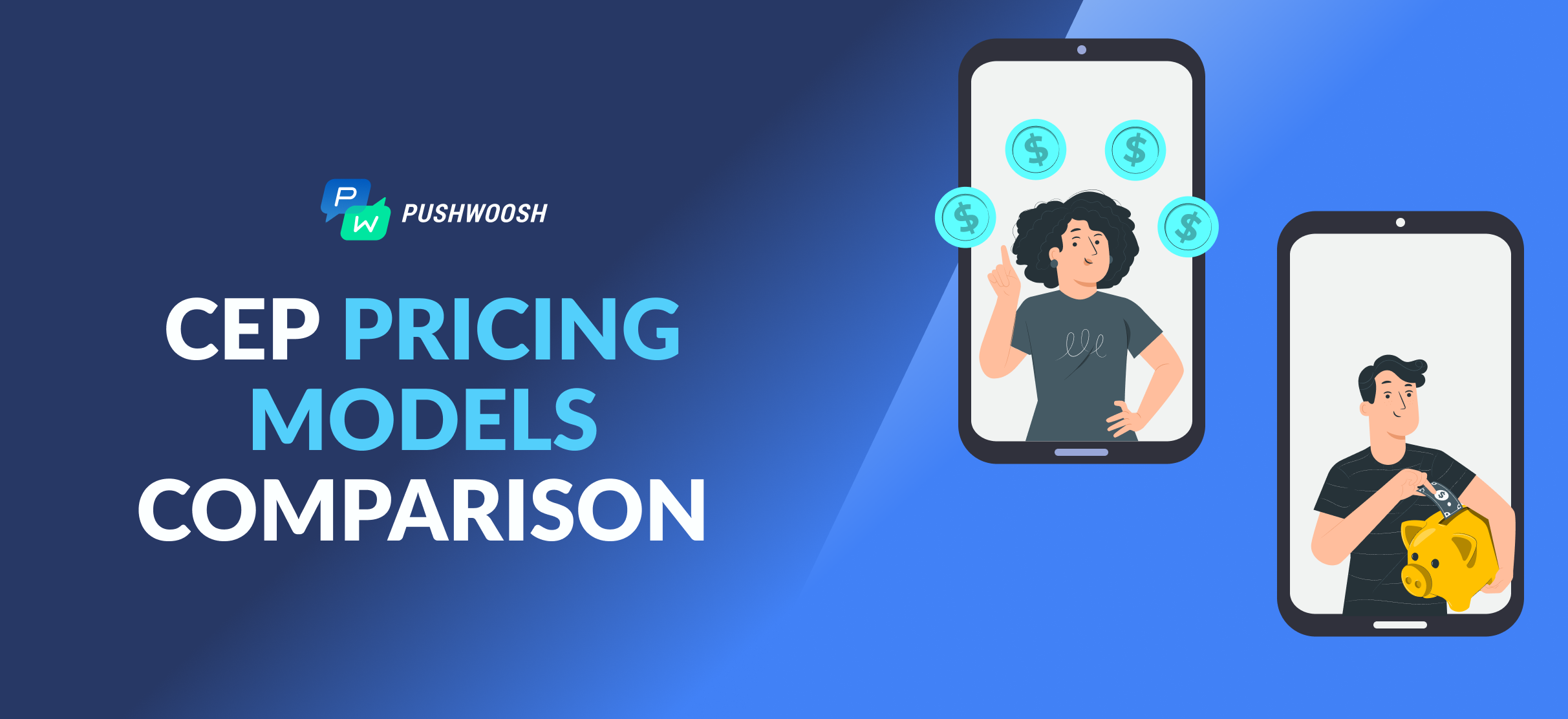For mobile marketers, navigating complex pricing models of customer engagement platforms can be a challenge. Do you wish to determine the perfect pricing model for your app, while avoiding overpayment? In this article, we'll guide you through the pros and cons of existing approaches.
Customer engagement platforms structure their pricing tiers based on required scenarios, considering the maturity of apps and the tasks they aim to address. One of the main criteria is based on the app's growth stage, which can be measured through the count of either users or devices. Let’s get into the details.
Pricing models based on MAU
Many customer engagement platforms utilize MAU (Monthly Active Users) count as a charging method.
In the mobile market, MAU represents the number of unique users engaging with an app within a month. The definition of what constitutes engagement may vary, but it typically revolves around meaningful user actions such as opening the app, logging in, making a purchase, performing a session, or viewing a page.
However, when it comes to customer engagement platforms, they often apply their own interpretations of MAU, which might differ from the standard market definition or include additional parameters. This leads to hidden factors and complexities that businesses need to be aware of. Let's delve into these interpretations to better understand their implications on pricing.
1. Pricing model based on MAU + data points (actually, on data points)
Used by: Braze, CleverTap.
Within this approach, pricing tiers are based on the MAU count and include a pre-defined limit of ‘data points’ for each MAU.
Data points relate to the information logged on user profiles and include various user actions within the app: page views, clicks on a link, and purchases — as well as changes in user profiles or transitions to another segment.
The fact that there is a limit on the number of data points for each MAU is often not explicitly indicated, so it's always a good idea to explore the provider's documentation and seek transparency in billing.
Cost-effective for: apps that primarily use customer engagement platforms for analytical purposes rather than engagement campaigns.
By contrast, apps with high user engagement and frequent marketing experiments (A/B/n testing, tags/segments experiments) may find it challenging to accurately project data point usage.
Example: Let’s say, in your selected plan, you have 700 data points allocated for one MAU. These data points could be distributed as follows:
- 100 user attributes that change each month;
- 50 events, with 10 attributes for each event, totaling 500 data points.
At present, this allocation might be sufficient for your needs. But what if after a month you decide to start collecting new events and you no longer fit within the limits? All in all, with this approach, you are constrained in terms of the amount of data you can take into operation.
2. Pricing model based on MTU (Monthly Tracked Users)
Used by: MoEngage, Mixpanel, Amplitude, mParticle.
The pricing model based on MTUs is a way to calculate billing based on the number of users that perform one or more qualifying events within a calendar month.
Each platform defines a qualifying event according to its own criteria. Notably, the definition may include events that are not generated by users themselves, and therefore, they do not reflect the actual count of engaged users.
Cost-effective: when a platform's definition of MTU aligns with the market's understanding of MAU. In such cases, the model offers good predictability.
To overcome all the uncertainties surrounding pricing models based on the interpretation of MAU counting, an alternative option emerges: a pricing model based on device count.
Pricing model based on the number of devices
Used by: Pushwoosh, OneSignal.
This pricing model calculates the cost of a customer engagement platform based on the total number of devices eligible for push notifications (devices with push tokens). Pricing plans based on the device count typically come with unlimited data points.
Cost-effective for:
- Apps that conduct numerous marketing experiments (running A/B/n tests, creating multiple tags and segments) and wish to avoid overpaying for excessive data points resulting from these activities.
- Apps whose primary engagement channel is push notifications and that want to ensure that they pay only for reachable users.
Example: Pushwoosh’s ‘Marketing’ tier includes an allotment of 1,000 devices for a monthly fee starting at $49 with no additional charges for using data points. Each additional 2k devices incurs an extra cost of $6 per month. The device-based pricing model ensures transparency and enables businesses to make well-informed decisions.
Deciding on the perfect pricing model for your app
So, whether a pricing model works well for a particular app depends on the app's engagement tactics, as well as the specifics of its marketing strategy and financial planning.
Apps that use customer engagement platforms more for analytics rather than for engagement campaigns, can adapt to the data-point-based model.
The MTU-based pricing model can offer predictable billing in case the MTU definition solely comprises events initiated by users.
Finally, for apps seeking cost-effectiveness while experimenting with marketing tactics and targeting users through push notifications, the device-based pricing model proves to be an optimal choice.
Ready to discuss your pricing in details? Get in touch with Pushwoosh Team:
Compare Pushwoosh’s plans and choose the right one for you:

